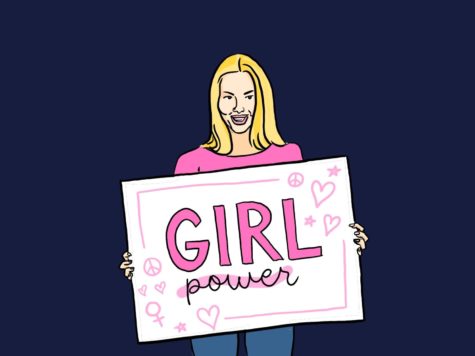OPINION | Non-intersectional feminism is not feminism
September 15, 2021

The feminist movement in the United States signaled the rise of education, equity and tolerance but also a dangerous ideology that suppresses feminism’s impact. This agenda, known as “white feminism,” is enacted by pseudo-feminists who thrive in a society filled with oppression. While this concept is accessible to white, middle to upper class and cisgender women, it is unattainable for those who cannot occupy these identities. Hence, white feminism lies with classism, transphobia and white supremacy.
A key example of white feminism in history is the work of Betty Friedan. Her book, “The Feminine Mystique,” helped instigate the second wave of feminism in the 1960s. After considering her peers’ and her own experiences as a homemaker, Friedan identified that not being able to pursue a career was the reason women were discontent with life. She interviewed solely white middle class women, excluding the more than one-third of all women who worked to survive at the time. Friedan omitted the fact that only her wealthy and white housewife audience had the means and desire to shape their lives towards this success model.
The principles in “The Feminine Mystique,” which have continued to inspire a future generation of feminists, are incorporated into white feminism’s modern day practice. The #MeToo movement was started by a Black woman named Tarana Burke, but Time Magazine framed their coverage of the campaign around actress Alyssa Milano, a white advocate who popularized #MeToo years later. #MeToo is just one of many instances where white people were credited for movements founded by BIPOC. This defeats the purpose of feminism — to establish equality for all the identities of marginalized genders.
Fortunately, activists like Rachel Cargle are fighting against oppression, delivering no-nonsense workshops in universities across the U.S. to people willing to shift into more intersectional mindsets. After a photo of her holding a sign at the 2017 Women’s March in Washington D.C. became viral, Cargle received criticism from Black netizens. Reflecting on her position in the movement, she realized, “it wasn’t until white women were personally affected that they came out in the millions.” However, women of color had been marching for many years.
While “white feminists” made significant progress concerning the rights of women, they did so by exploiting women of color, transgender women and genderqueer people. White feminism ropes marginalized groups into believing their situations will improve if they place enough effort into campaigns led by white feminists. These pseudo-feminists center their involvement in feminism on undoubtedly important but white-centered slogans such as “Free the Nipple.” They turn a blind eye to issues such as the lack of government funding for health conditions disproportionately impacting Black women or the “bathroom bills” perpetuating violence against transgender and gender-nonconforming individuals.
In fact, white feminism is what intersectional feminism is trying to eliminate. Acknowledging intersectionality in feminism is critical because the disparities people face are often magnified due to their various identities. Instead of focusing on an individualistic effort where a singular type of woman rises within a flawed society, intersectional feminism tackles systems of oppression through collective action. Intersectionality validates the experiences of those who exist outside the white middle class woman mold, making equality an obtainable mission.
Everyone has the right to experience the same sense of “normal,” and true feminism equates to advocating for everyone affected by patriarchy. Feminism can only flourish if all marginalized genders band together to disassemble hateful constructs and create ones that spread love and support.






















Enough already • May 2, 2022 at 6:37 pm
Your need to attack and denigrate historic white feminists is a serious turn off. It’s a new day. Why don’t you just build something, lead something, do something. It actually doesn’t require you tearing other people down.
Feminista • Sep 16, 2021 at 11:14 am
Feminism that fights for men’s rights over women’s is not feminism.
There, FTFY.